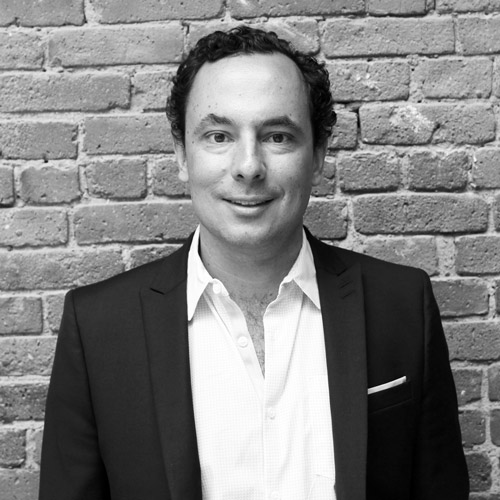With more than 17,000 people in twelve academic schools, nine centers, and twelve administrative departments, managing human resources at the University of Pennsylvania can be a daunting task. With about 2,100 hires in 2015 alone, staff positions include business functions such as development, finance, and information technology, as well as specialized areas like the university police department, building trades, and medical researchers.
Populating the hub of life-saving research
In 2015, the University of Pennsylvania attracted more than $939 million in research awards. The HR department frequently works with researchers to help staff studies that advance knowledge and serve society, including:
• Immunotherapy that turns patients’ T-cells into “serial killers” aimed at tumors in patients with blood cancers (Perelman School of Medicine)
• A spinal fluid “signature” chemical test, positron emission tomography, and arterial-spin labeling to improve early Alzheimer’s disease detection
• Cutting-edge liquid nanocrystal transistors that will open the door for electrical components to be built into flexible or wearable applications (School of Engineering and Applied Science)
• Cross-disciplinary work to isolate cancer chemicals that only dogs can smell, and training specialized breeds to detect the early signs of ovarian cancer (School of Veterinary Medicine)
• Brain research into the correlation of socioeconomic status and lifelong mental health, cognitive ability, and academic achievement (Center for Neuroscience and Society)
Helping to coordinate all of the associated processes and responsibilities is Jack Heuer, vice president for human resources, who stresses the concept of guiding the way to solutions through consultation, investigation, and collaboration. His philosophy is to ask several questions (what he calls “kicking the tires”) in order to accurately identify and fully understand the situation at hand.
“People often rush to solutions without fully understanding the right questions to ask,” Heuer says. “By digging deeply into an issue you can prioritize problem solving and avoid creating unintended consequences that cause greater problems down the road.”
For example, the university must manage more than $160 million in healthcare costs annually. Addressing increases in those costs by shifting them to program participants is an obvious choice, but making its benefits package less appealing could impact the institution’s efforts to recruit top talent. Heuer’s more thoughtful approach is to involve faculty, staff, and other stakeholders to build consensus toward creative solutions, such as emphasizing wellness programs that can help improve individuals’ health and program costs over the long term.
“It might seem that consultation takes longer to resolve issues. But working together on the front end creates opportunities for building synergies, supports moving from planning to implementation, and helps facilitate acceptance down the line,” he explains.
Working with many different parties provides fertile ground for developing cross-functional relationships. Several years ago, Heuer helped an administrator in another department learn a particular software package, which was not a typical HR responsibility. But the activity created a new alliance outside the usual HR arena.
This is typical of the department’s approach to outreach, transparency, and nontraditional professional development. HR staff is involved with the university’s committee to examine fossil fuel investments in its endowment. Well outside their areas of expertise, participating HR department staff gain exposure to new information, develop new skills, and create new connections that might not occur otherwise. This cross-functional method works in reverse as well by bringing outside perspectives and fresh questions into HR problem-solving processes.
Heuer also hosts regular “chats with Jack” to allow staff members throughout the university the opportunity to maintain direct contact with employees at all levels. The chats have set the stage for many productive conversations. In one instance, Heuer says, it led to establishing HR office hours in one particular building in response to comments that “we only see HR when someone’s getting disciplined.”
Heuer describes the results of the chats by explaining, “If HR keeps up a visible presence, we maintain empathetic connections with employees and raise awareness of how we can work with them. That helps us go from being ‘the authority’ to being relationship builders.”
Aside from the range of positions that need to be filled, the academic environment presents an array of unique HR challenges. Tenure, for example, can make it difficult to bring in younger scholars. Heuer helped develop a retirement counseling program that demonstrates to older faculty—who often view their academic pursuits not as jobs, but as “personal callings”—how they can remain part of the community and continue teaching and doing research even if they give up tenured positions.
The HR department works closely with the university’s schools and centers to fully understand the skills and types of candidates required to fulfill many different responsibilities. Each placement presents particular challenges, but among the most specialized needs are for clinical and research positions at the Perelman School of Medicine (PSOM). In 2015 alone, the HR department facilitated hiring ninety-eight research specialists, sixteen resource technicians, seventy-five clinical professionals, and seventeen senior level positions at PSOM.
New staff included internal hires, but many came from outside giants such as Merck or Johnson & Johnson, who were drawn in by the university’s groundbreaking research. “We don’t offer stock options or bonus programs,” Heuer admits, “but we still attract professionals from other institutions and firms of all sizes. Compensation and benefits packages are critical, but equally important is our value proposition: employees are involved in highly engaging and gratifying work here.”
Three years ago, the HR department developed an executive-level recruitment service to provide in-house, personalized assistance to fill critical university positions. While supporting the university’s focus on inclusion and diversity recruitment, the program has led to the hiring of several vice deans and the university director of financial aid. Heuer says it also identified top candidates to keep “in reserve” for future opportunities.
Heuer has been instrumental in leading a variety of other HR initiatives. He’s adapted the university’s short-term disability policy to provide better income protection for exempt and nonexempt staff. He’s developed an online “manager’s toolkit” with how-to videos and other resources for supervisors. He also has been active in the “Be in the Know” wellness program developed in collaboration with the Penn Center for Public Health Initiatives, student health, and the Division of Recreation and Athletics.
Lifestyle is also part of the attraction of working on an academic campus, according to Heuer. The University of Pennsylvania strives to provide a family-friendly environment as part of that culture, and it is one of only thirty-three universities and 116 other organizations to be recognized with the WorldatWork Work-Life Seal of Distinction.
Heuer points out that in keeping with the university’s Quaker values, human resources has been a part of helping to connect staff with various community volunteer programs. For the past several years, the department has collaborated with a local temporary employment agency that has helped hundreds of local residents build their résumés and interviewing skills. This partnership has helped match some residents with full-time roles at the university. Others were hired into temporary staff positions, some of which have since transitioned into full-time jobs with full benefits packages.
“It’s all part of working outside our usual expected domains,” Heuer says. “For HR professionals and for our clients, the more comprehensive our understanding of the surrounding environment and its requirements, the more competent we become while simultaneously creating benefits for ourselves and the university.”

